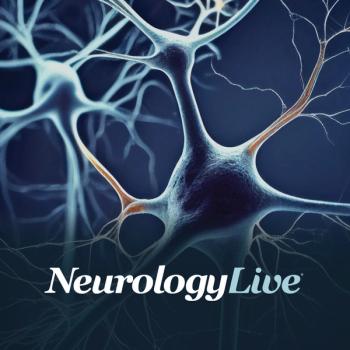
Addressing Photophobia in the Headache Clinic
Kathleen Digre, MD, past president of the American Headache Society, discusses the barriers to correct identification and treatment of eye symptoms in people with migraine.
Kathleen Digre, MD
This is part 2 of a 2-part interview. To read part 1,
For many patients with migraine, the pain associated with an attack goes far beyond a throbbing sensation in their head. Nausea, phonophobia, and photophobia complete the troublesome trifecta of most bothersome symptoms associated with migraine, with nearly 65% of all migraineurs included in the cross‐sectional, observational Migraine in America Symptoms and Treatment (MAST) study reporting all 3 symptoms. Notably, most participants reported experiencing photophobia (49.1%).
According to the study authors, “the visual cortex appears to be hyperexcitable in people with migraine even in the prodromal phase and may be the neural substrate of abnormal processing of light sensitivity…. This could provide a link between the visual cortex hyperexcitability, symptoms of photophobia, and the propensity to develop cortical spreading depression and aura.”
During a lecture at the
Digre spoke with NeurologyLive to further discuss the prevalence of eye symptoms in patients with migraine and her thoughts on how to optimize their identification and treatment.
NeurologyLive: Historically, how has eye pain and photophobia typically been addressed in the headache clinic?
Kathleen Digre, MD: It's usually not addressed. My practice is full of people who've been to 3 or 4 neurologists, 3 or 4 ophthalmologists, and nobody really gets to the bottom line of what's going on. I have to say, I've seen the whole gamut when people are referred in; there's a lot of causes and you have to think about all the different causes. Migraine is usually the underlying substrate, and then dry eyes. Dry eyes are really common and the anatomy again comes into play with the cornea. The cornea is filled with the trigeminal nerve endings and that feeds right back into the trigeminal system for migraine, so I think every neurologist, every headache specialist should realize that there can be this contribution. If they don't want to do some of the testing, like the proparacaine drops or the Schirmer's test, they could partner with an ophthalmologist who can do that and can verify that the exam is normal. Then we need to start working on treatment. Simple treatments, like over the counter, preservative-free tears work for many, many people. Some people need more lubrication than that, and an ophthalmologist could help with that side of things. Then the neurologists and headache specialists really have to work on preventing the migraine and getting that under control, as well as deciding whether to treat any accompanying depression and anxiety, because both of those could be playing a role here.
Does the typical headache questionnaire or screening adequately cover these eye symptoms, in terms of being able to identify a patient who may be suffering from these issues?
You could ask about chronic photophobia. That's an easy thing to say, “Do you have photophobia in between your attacks or are you overly light sensitive in between attacks?” That's something that we can easily add to the questions. “Do you feel like your eyes are dry? Do you have dry eye symptoms? Do your eyes hurt in any way?” We could ask that question as it’s not usually a routine question for people with migraine. We've found that it's really not usually the episodic migraineurs, but the people with chronic migraine who report these symptoms.
In migraine patients specifically, are these symptoms typically relieved with good migraine treatment/prevention, or do you still feel that there's a need to have supplementary care specifically for the eye symptoms?
You might need to do both, and it's very patient dependent. The other treatments we use a lot are FL-41 tint, a blue-blocking lens that blocks the melanopsin pathway. So, there's treatment that you can try. It doesn't work for everybody, but it has zero side effects and it's not that expensive, and for some people, it's a game changer. It's another easy treatment that neurologists and headache specialists can recommend.
What's the importance of addressing these symptoms in terms of patient quality of life?
We've done the study on quality of life and found that individuals with chronic migraine and episodic migraine with eye pain have almost a dose response decrease in their quality of life. If they have chronic migraine, it's as if they've got optic neuritis from multiple sclerosis or idiopathic intracranial hypertension. Episodic migraine has it a little bit, but it's not as bad as chronic migraine for quality life. Many studies before this had done just overall quality of life with migraine, of course, saying that migraine quality of life has been decreased. The second study we did we looked at what could be driving the poor quality of life. In chronic migraine, we looked at aura, photophobia, and dry eye symptoms and dry eye symptoms seem to be correlated best with the decrease in the visual quality of life with chronic migraine.
Transcript edited for clarity.
REFERENCE
Munjal S, Singh P, Reed ML, et al. Most bothersome symptom in persons with migraine: results from the Migraine in America Symptoms and Treatment (MAST) Study. Headache. 2020;60(2):416-429. doi: 10.1111/head.13708
Newsletter
Keep your finger on the pulse of neurology—subscribe to NeurologyLive for expert interviews, new data, and breakthrough treatment updates.


































